Take me back to what to know your first fireworks show
Aerial Fireworks Safety
Safety First
First a few safety guidelines:
– Always keep your body parts away from the muzzle of the mortar once it is loaded.
– Be wary of cutting the quick match if there is an electric match in it. This WILL set it off if you cut through the e-match as e-matches are one of the most sensitive devices we deal with.
– Remember, they are explosives, some more sensitive than others, treat them ALL with respect.
Loading Aerial Fireworks
How do you load an aerial firework shell for an electrically fired display?
In the fireworks industry, this is known as “drop and wire.” First, unwind the electric match. Lower the shell down into the mortar with the lift charge on the bottom. Make sure the shell reaches all the way down to the bottom, otherwise, the shell will not reach the desired height when fired. Apply a strain relief to the wire, and plug it into the appropriate terminal. Make sure you crimp the connector down on the wire to ensure proper contact.
How do I apply a strain relief on the electric match wire?
All methods of wire strain relief have the primary goal of keeping the wire which is hooked into a cue from being pulled violently away during the firing of a shell. If the wire is pulled away (since it is attached to the shell) at high speeds, it has the potential of prematurely pulling out adjacent cues, rendering them un-fireable. A good strain relief will allow the wire to break on the shell end instead of being pulled out of the cue. There are quite a few methods for strain relieving a wire; however, the two best methods will be described here.
Quick Release Method
The quick-release method strain relieves the wire, at the same time allowing for an extremely simple removal of the wire from the mortar at the end of the night. You are tying a slip knot. The knot will not give when the wire is being tugged on during firing, but when pulled from the other end, it comes out with no effort at all. This method requires a small hole just big enough for the wire to fit through at the top of the mortar.
Half Hitch Method
This method is used when there is no hole available at the top of the mortar and for one reason or another, it is not feasible to drill one. It is not as reliable as the Quick release method, however still very effective when done properly. This method consists of creating a “half-hitch” with the wire and placing this over the mortar.
Strain Relief Step 2
If loading shells in racks, pass the electric match wire between the mortar and the rack it is placed in on the way to the module you’re going to plug it into. This is of course after it has been strain relieved by one of the above techniques. See quick-release strain relief picture, it shows this second step as well.
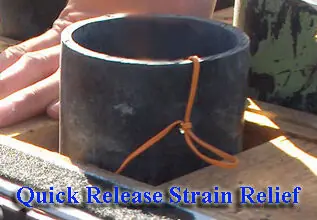
Quick Release, also shows step 2
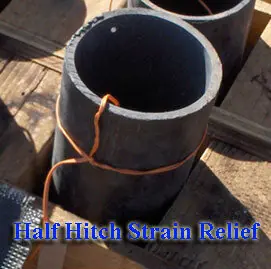
Half Hitch
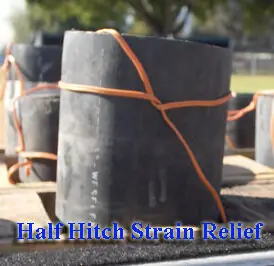

Do I have to remove the plastic bag that some individual aerial shells come in?
No. This is really up to you, as it does not affect the performance of the shell. The heat created by the lift charge literally makes the bag disappear during firing. Just load the shell with the bag still around it. This eliminates the amount of trash you generate at a show and can make the shell more resilient if set up in foul weather.
The shell barely fits, will it come out when fired?
Yep. The general rule of thumb is that if you can get the shell to the bottom of the mortar, it will come back out. Mortars, especially those made of HDPE tend to warp over time. This is ok as long as the shell can still be loaded to the bottom. It’s ok if the shell is a little tight, as this should not affect its performance. Now, if you have to cram the shell down by hammering it in with a stick (don’t do that), that’s no good. If that is the case, just replace the mortar. The shell must be able to slide freely down the mortar with a minimal amount of assistance. In most cases, the shell slides down the mortar under its own weight.
Aside from the danger factor, keep in mind that most shells utilize cardboard for their casing. This cardboard must be able to hold up during the violent process of firing. This is most likely not the case if the shell has to force its way out of the mortar, especially if you have potentially damaged it by ramming it down there in the first place. Safety first!
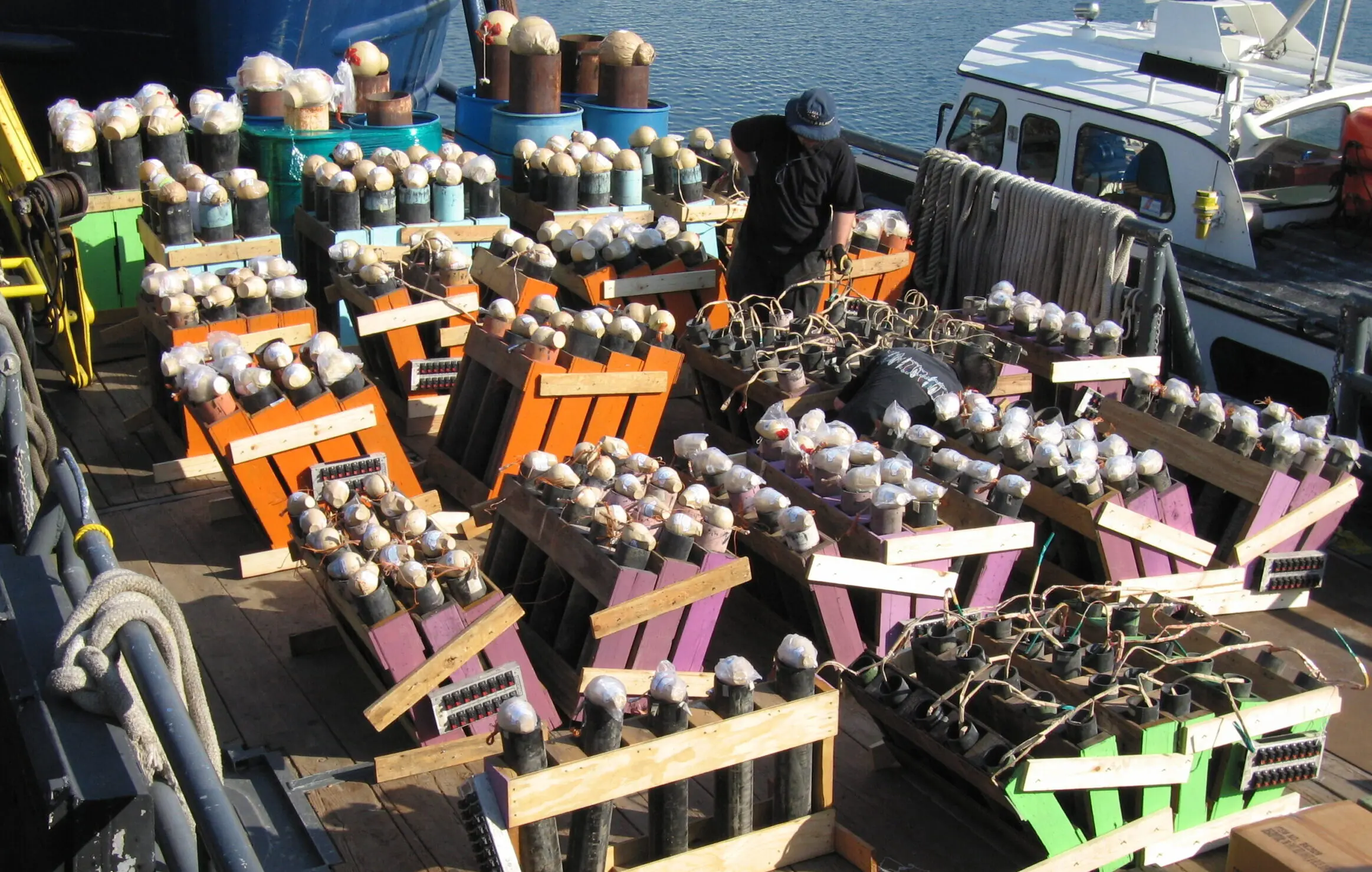
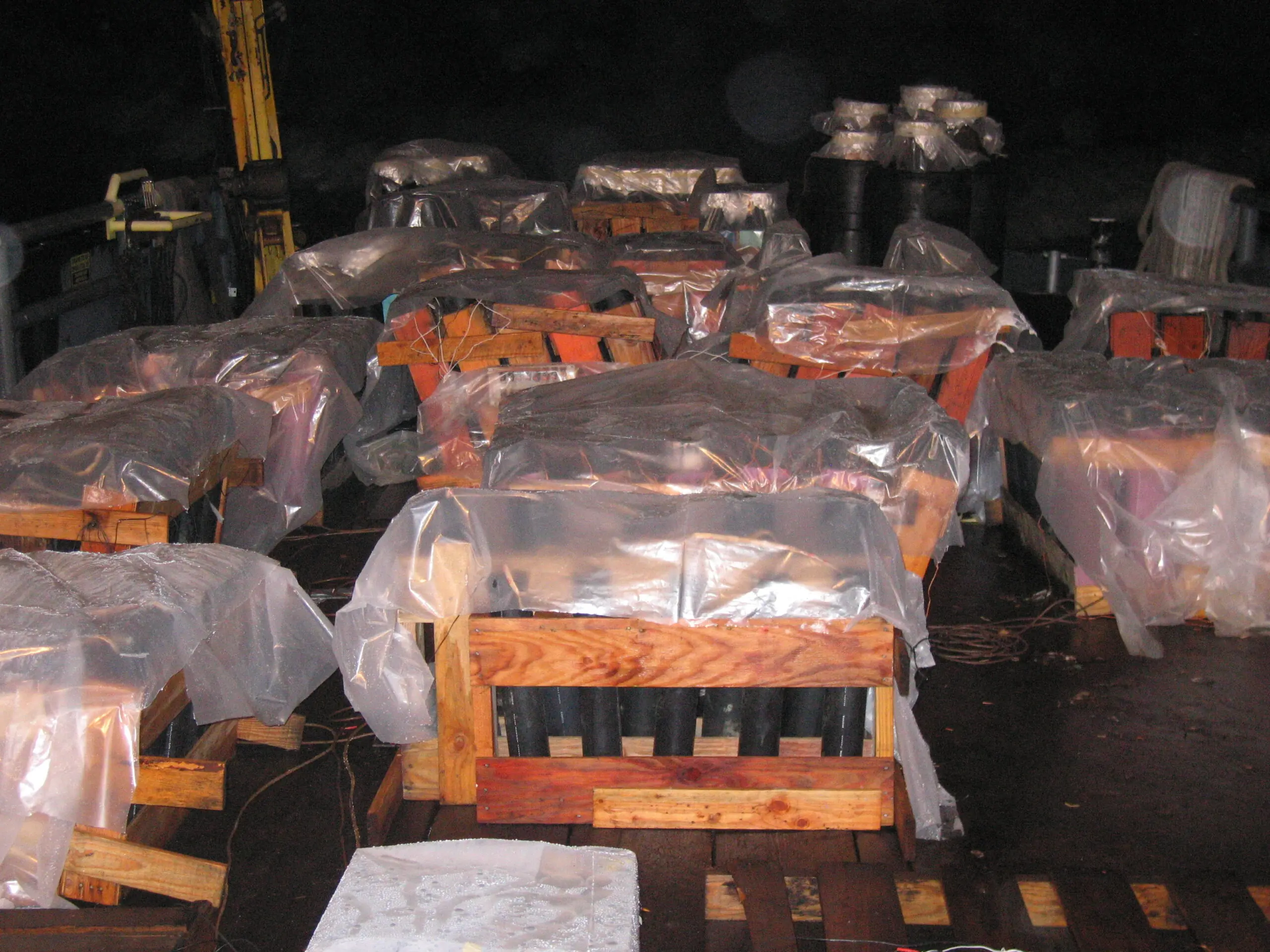
If it’s raining, can I fire through plastic sheeting?
Yes! You may worry that during a good storm when you have all your mortars covered with plastic sheeting would impede the performance of your firework shells. Yes, but in a negligible way. Your shells will blow right through the plastic as if it weren’t there, especially if it is tightly secured over your guns. Ultimately, if it isn’t raining, remove the plastic before you fire. But, if it is raining hard or you expect it to during the show, know that it is ok to leave it on in these circumstances.



